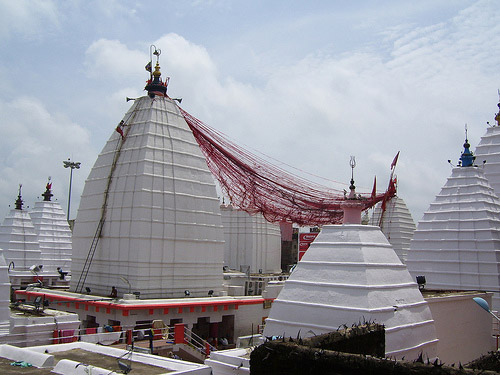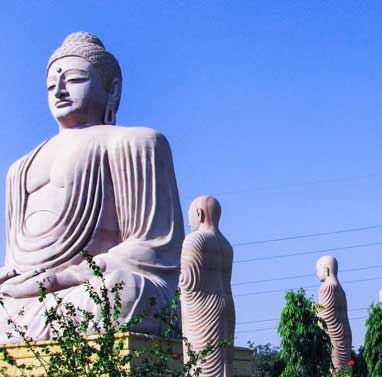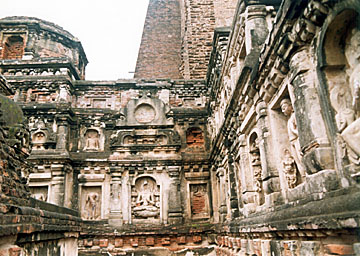Best of India Tours
- Golden Triangle Tour- Best of India & Nepal
- Classical Rajasthan
India Cultural Tours
- Images of North India- Karnataka Heritage
- Rajasthan & Goa Tour
Discover India Tours
- Grand India Tour- North to South India
- Central to South India
Rajasthan Tours
- Classical Rajasthan Tour- Golden Triangle Tour
- Grand Mughal Tour
India Luxury Trains
- Palace on Wheels- The Golden Chariot
- India Deccan Odyssey
- The Indian Maharaja
- Royal Rajasthan on Wheels
Nepal Tours
- Glimpses of Nepal- Buddhist Pilgrimage
- Nepal River Rafting
- Destinations of Nepal
- Nepal General Info
India Wildlife Tours
- North India Wild Life- South India Wildlife
Tibet Tours
- Tibet Monastery Tours- Explore Tibet
- Destinations of Tibet
Spa & Yoga Tours
- Ananda in Himalayas- Yoga & Meditation
Adventure Tours
- Manali Safari Tour- Himalayan Trekking
- Horse Safari
Bihar
Patna
![]() Vaishali
Vaishali
![]() Baidyanath Dham
Baidyanath Dham
![]() Gaya
Gaya
![]() Bodhgaya
Bodhgaya
![]() Nalanda
Nalanda
Of all India’s states, Bihar is the one most intimately linked to the Buddha’s life, resulting in a trail of pilgrimages which have come to be known as the Buddhist circuit. The very name Bihar is derived from the world ’vihara’, which means Buddhist monastery. The Buddhist trail begins at the capital city, Patna, where a noteworthy museum contains a collection of Hindu and Buddhist sculptures. To the south of Patna is Nalanda which translates as ’the place that confers the lotus’ (of spiritual knowledge). A monastic university flourished here from the 5th to the 11th century. Rajgir, ‘the royal palace’, was the venue for the first Buddhist Council. The Buddha spent five years at Rajgir after having attained enlightenment, and many of the remains at Rajgir commemorate various incidents. Bodhgaya is the spot where Lord Buddha attained enlightenment, with the Mahabodhi Temple marking the precise location. Bihar’s Buddhist circuit has modest back-up facilities by way of accommodation, international dining and surface transport.
Patna

Patna once called Pataliputra the capital of Bihar, is among the world's oldest capital cities with unbroken history of many centuries as imperial metropolis. A very fertile arched stretch of land along the bank of the Ganga, the history and heritage of modern day Patna go back well over two millennia. It was Ajatshatru the Magadha king who first built a small fort in Pataligram on the bank of the Ganga in 6th century BC, which later blossomed into the ancient glory still to be seen in the neighbouring archaeological sites at Kumrahar. Bhiknapahari, Agamkuan, Bulandi Bagh
and Kankar Bagh
Pataliputra dominated the political fortunes of the whole of north India between 6th century BC and 5th century AD, a fact established by archaeological excavations. After the decline of the Mughals, the British too found Patna a convenient regional capital and built a modern extension to this ancient city and called it Bankipore. It was in Gandhi Maidan in this area that Mahatma Gandhi held his prayer meetings.
 Altitude: 53 metres
Altitude: 53 metres
 Climate:(degree C): Summer- Max. 43, Min. 21. Winter - Max. 20, Min. 6.
Climate:(degree C): Summer- Max. 43, Min. 21. Winter - Max. 20, Min. 6.
 Clothing: Summer- Cottons, Winter- Heavy Woolens
Clothing: Summer- Cottons, Winter- Heavy Woolens
 Rainfall: 120 cms
Rainfall: 120 cms
 Best Season:October to March
Best Season:October to March
 By Air:Connected with Bombay, Calcutta, Delhi, Lucknow, Ranchi.
By Air:Connected with Bombay, Calcutta, Delhi, Lucknow, Ranchi.
 By Rail:Connected to Bombay, Calcutta, Guwahati, Ranchi, Varanasi.
By Rail:Connected to Bombay, Calcutta, Guwahati, Ranchi, Varanasi.
 By Road:Nalanda- 90 kms, Rajgir- 102 kms, Pawapuri- 90 kms, Gaya- 172 kms, Bodhgaya- 179 kms, Raxaul- 210 kms, Ranchi- 335 kms, Muzzafarpur- 72 kms, Sasaram- 152 kms, Vaishali- 56 kms, Calcutta- 653 kms, Delhi- 997 kms.
By Road:Nalanda- 90 kms, Rajgir- 102 kms, Pawapuri- 90 kms, Gaya- 172 kms, Bodhgaya- 179 kms, Raxaul- 210 kms, Ranchi- 335 kms, Muzzafarpur- 72 kms, Sasaram- 152 kms, Vaishali- 56 kms, Calcutta- 653 kms, Delhi- 997 kms.
Vaishali

Vaishali today is a small village known for its historical past. The epic Ramayana tells the story of the heroic King Vishal who ruled here. Historians maintain that one of the world's first democratic republics with an elected assembly of representatives flourished here in the 6th century. Vaishali, on the left bank of the Gandak river, is spiritually supreme : Lord Buddha visited this place frequently and at Kolhua, close by, preached his last sermon. One of the famous lion pillars have been erected here by Emperor Ashoka.
A hundred years after the Mahaparinirvana of the Buddha - Vaishali hosted the second great Buddhist council. Jainism, too, has its origins in Vaishali, for in 527 B.C., Lord Mahavir was born here and lived in Vaishali till he was 22. Vaishali is then twice blessed and remains an important pilgrim centre for both Buddhists and Jains and other religions also.
 Altitude: 52 metres
Altitude: 52 metres
 Climate: (Max./Min.) Summer 44 Deg C/21 Deg C. Winter 23 Deg C/6 Deg C
Climate: (Max./Min.) Summer 44 Deg C/21 Deg C. Winter 23 Deg C/6 Deg C
 Rainfall: 120 cms
Rainfall: 120 cms
 Best Season:October to March
Best Season:October to March
The Jain Prakrit Institute offers a place of study for researchers interested in Jainology an Prakrit, one of the spoken languages of Northern India in ancient times.
How To Reach -
 By Air:Nearest airport is Patna, connected to Bombay, Calcutta, Delhi, Ranchi and Lucknow.
By Air:Nearest airport is Patna, connected to Bombay, Calcutta, Delhi, Ranchi and Lucknow.
 By Rail: Nearest railhead is Hajipur.
By Rail: Nearest railhead is Hajipur.
 By Road: Patna- 55 kms, Muzaffarpur- 36 kms and Hajipur- 35 kms.
By Road: Patna- 55 kms, Muzaffarpur- 36 kms and Hajipur- 35 kms.
Baidyanath Dham (Deoghar)

Baidyanath Dham situated in the Santhal Parganas of Bihar, is a very important pilgrim Centre. It's famous for the Hindus for the temple of Shiva-Baidyanath and the place is a popular holiday Centre.
 Climate:(deg C): Summer- Max 36.9, Min 23. Winter - Max 27.7, Min 7.4.
Climate:(deg C): Summer- Max 36.9, Min 23. Winter - Max 27.7, Min 7.4.
 Best Seasons:October to February.
Best Seasons:October to February.
 By Air:
Nearest Railway Station is Baidyanath Dham (Deoghar) which is a terminal station of a 7 kms branch line originating from Jasidih Jn.
By Air:
Nearest Railway Station is Baidyanath Dham (Deoghar) which is a terminal station of a 7 kms branch line originating from Jasidih Jn.
 By Rail:
Calcutta- 373 kms, Giridih- 112 kms, Patna- 281 kms, Dumka- 67 kms, Madhupur- 57 kms, Shimultala- 53 kms.
By Rail:
Calcutta- 373 kms, Giridih- 112 kms, Patna- 281 kms, Dumka- 67 kms, Madhupur- 57 kms, Shimultala- 53 kms.
Gaya

Bihar has some of the most sacred Buddhist and Hindu shrines. Gaya is one of the most important pilgrimage places for the Hindus. It is believed that a Hindu will reach heaven if his last rites are offered under the celebrated ’Akshayabat’ or immortal banyan tree, standing in the yard of Vishnupad temple. Believed to be built on the footsteps of Vishnu, the grand temple was renovated by Ahalyabai, queen of Indore.
Excursions:
 By Rail:
Gaya is an important railway junction.
By Rail:
Gaya is an important railway junction.
Bodhgaya

Bodhgaya is one of the sacred places for the Buddhists as well as for the Hindus. Here under the Bodhi Tree, Gautama attained supreme knowledge to become Budhha, the `Enlighted One'. The Buddha attained enlightenment in Bodhgaya, under the Bodhi tree which still stands in the temple premises. The magnificent Mahabodhi temple in Bodhgaya is an architectural amalgamation of many centuries cultures and many heritages that came to pay their homage here. The temple definitely has architecture of the Gupta and later ages, inscriptions describing visits of pilgrims from Sri Lanka, Myanmar and China between 7th and 10th century AD.
 Altitude: 113 metres
Altitude: 113 metres
 Climate:(deg c): Summer- Max.47, Min.28. Winter- Max.28, Min.4. Rainfall: 186 cms ( Mid. June to Mid. September )
Climate:(deg c): Summer- Max.47, Min.28. Winter- Max.28, Min.4. Rainfall: 186 cms ( Mid. June to Mid. September )
 Best Season: October to March
Best Season: October to March
 By Air:
Nearest airport is Gaya- 12 kms. Patna is connected to Bombay, Calcutta, Delhi, Ranchi & Lucknow.
By Air:
Nearest airport is Gaya- 12 kms. Patna is connected to Bombay, Calcutta, Delhi, Ranchi & Lucknow.
 By Rail:
The nearest railhead is Gaya- 12 kms.
By Rail:
The nearest railhead is Gaya- 12 kms.
 By Road:
Gaya- 12 kms, Nalanda- 62 kms, Rajgir- 46 kms, Patna- 152 kms, Varanasi- 215 kms, Calcutta- 482 kms.
By Road:
Gaya- 12 kms, Nalanda- 62 kms, Rajgir- 46 kms, Patna- 152 kms, Varanasi- 215 kms, Calcutta- 482 kms.
Nalanda

Founded in the 5th century A.D. Nalanda is known as the ancient seat of learning. World's most ancient University lies in ruins which is 62 kms from Bodhgaya and 90 kms south of Patna. Emperor Ashoka built many monasteries, temples and Viharas here. Hiuen Tsang stayed here in 7th century and has left detailed description of the excellence of education and purity of monastic life practiced here. In this first residential international university of the world, 2,000 teachers and 10,000 students from all over the Buddhist world lived and studied here.
The Gupta kings patronized these monasteries, built in old Kushan architectural style, in a row of cells around a courtyard. Ashoka and Harshavardhana were some of its most celebrated patrons. An international Centre for Buddhist Studies was established here in 1951. Nearby is Bihar Sharif, where an annual urs is celebrated at the Dargah or tomb of Malik Ibrahim Baya. Baragaon, The Sun temple is famous for Chhath Puja.
 Altitude: 67 meters
Altitude: 67 meters
 Climate:(deg C): Summer- Max. 37.8, Min. 17.8. Winter- Max.27.8, Min.10.6
Climate:(deg C): Summer- Max. 37.8, Min. 17.8. Winter- Max.27.8, Min.10.6





 Maner- 29 kms
Maner- 29 kms